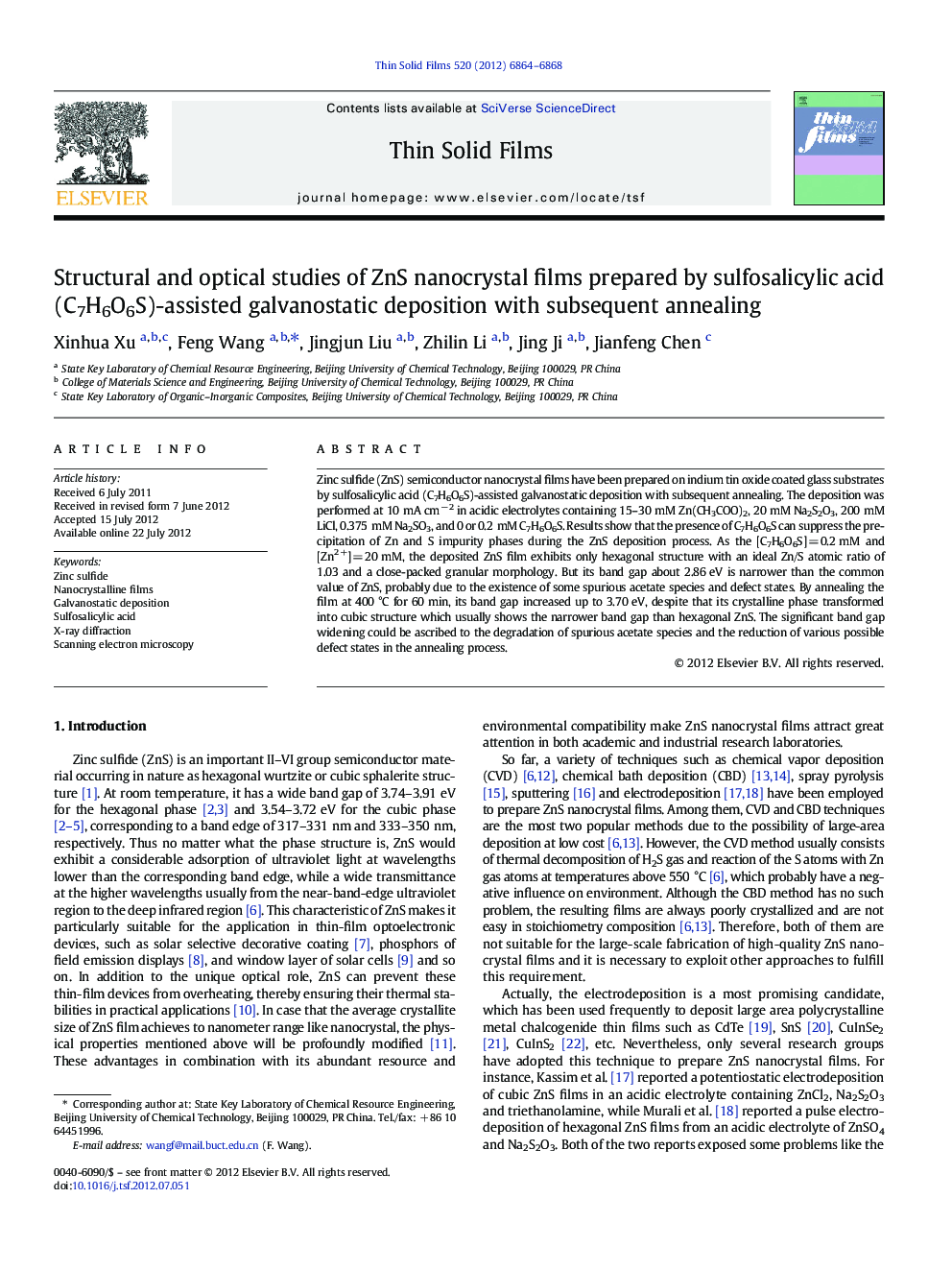| Article ID | Journal | Published Year | Pages | File Type |
|---|---|---|---|---|
| 1667004 | Thin Solid Films | 2012 | 5 Pages |
Zinc sulfide (ZnS) semiconductor nanocrystal films have been prepared on indium tin oxide coated glass substrates by sulfosalicylic acid (C7H6O6S)-assisted galvanostatic deposition with subsequent annealing. The deposition was performed at 10 mA cm− 2 in acidic electrolytes containing 15–30 mM Zn(CH3COO)2, 20 mM Na2S2O3, 200 mM LiCl, 0.375 mM Na2SO3, and 0 or 0.2 mM C7H6O6S. Results show that the presence of C7H6O6S can suppress the precipitation of Zn and S impurity phases during the ZnS deposition process. As the [C7H6O6S] = 0.2 mM and [Zn2 +] = 20 mM, the deposited ZnS film exhibits only hexagonal structure with an ideal Zn/S atomic ratio of 1.03 and a close-packed granular morphology. But its band gap about 2.86 eV is narrower than the common value of ZnS, probably due to the existence of some spurious acetate species and defect states. By annealing the film at 400 °C for 60 min, its band gap increased up to 3.70 eV, despite that its crystalline phase transformed into cubic structure which usually shows the narrower band gap than hexagonal ZnS. The significant band gap widening could be ascribed to the degradation of spurious acetate species and the reduction of various possible defect states in the annealing process.
► Galvanostatic deposition of ZnS semiconductor nanocrystal films ► Assisted by sulfosalicylic acid additive with subsequent annealing ► Sulfosalicylic acid can improve the purities of ZnS nanocrystal films. ► Annealing can modify the film crystallinities and optical properties.
